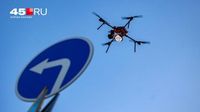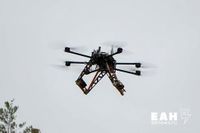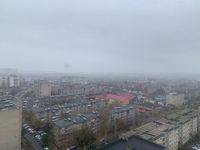On April 9, 2025, the Orenburg region of Russia experienced a significant military incident when air defense systems successfully intercepted and destroyed four Ukrainian unmanned aerial vehicles (UAVs) targeting a military airfield. According to the Russian Ministry of Defense, the interception occurred between 6:30 AM and 7:05 AM Moscow time, marking a critical moment in the ongoing tensions between the two nations.
Evgeny Solntsev, the acting governor of Orenburg, confirmed the attack and reassured the public that there were no casualties or damage reported. "Today, the Russian air defense forces repelled an attack by UAVs on a military airfield in the Orenburg region. There are no casualties or destruction. I urge everyone not to panic; the situation is under control," he stated in a social media post.
This incident is the second officially confirmed drone attack in the Orenburg region this year. On January 21, 2025, residents of Yasny and ZATO Komarovsky had to evacuate due to an air threat, although authorities later reported that no drones had been detected at that time.
Residents of the southern part of Orenburg reported hearing loud explosions during the morning hours of the attack. The regional dispatch service, known as EDDS, confirmed the threat of a drone attack, prompting an air alert in the area. The Orenburg Media provided guidance on how residents should respond during such threats, advising them to seek shelter and report any drone sightings to the police.
In recent weeks, the frequency of drone attacks has escalated across various Russian regions. On March 20, 2025, Russian air defense forces shot down a staggering 132 Ukrainian drones that were targeting multiple areas, including the Saratov, Voronezh, and Belgorod regions. This uptick in drone activity has raised alarms among local authorities and residents alike, as they navigate the complexities of living under the threat of aerial attacks.
Governor Solntsev's assurances come amid a backdrop of heightened military activity and public concern. The Orenburg region, which has been relatively quiet in terms of direct military engagements, now finds itself under the scrutiny of air defense operations. The governor's call for calm reflects an attempt to maintain public order while addressing the potential for future threats.
In previous incidents, such as a drone attack on the Rostov region on March 23, 2025, the consequences were more severe, resulting in one death on the highway and property damage from falling debris. This incident underscored the real dangers posed by drone warfare, as the military and civilian populations grapple with the implications of such technology in modern conflict.
The Russian military's response to these drone threats has been swift, with air defense systems being deployed to key locations across the country. The public has been advised on safety measures, including how to respond to air alerts and the importance of reporting any suspicious drone activity immediately.
As tensions continue to rise, the situation in the Orenburg region serves as a stark reminder of the ongoing conflict between Russia and Ukraine, with both sides employing advanced technology in their military strategies. The effectiveness of drone warfare and air defense systems will likely play a crucial role in shaping the future of this conflict.
Residents in Orenburg are now left to navigate their daily lives with the knowledge that they are in a potential conflict zone. The government’s response to these threats will be closely monitored as the situation evolves. Public safety measures are being emphasized, with local authorities urging citizens to stay informed and prepared for any further developments.
This latest drone attack highlights the broader implications of the conflict, as it not only affects military operations but also has a significant impact on civilian life. The psychological toll on residents, who must live with the constant threat of aerial attacks, cannot be underestimated.
As the situation develops, the international community watches closely, with many analysts speculating on the potential for escalation in the region. The use of drones in warfare has opened new avenues for conflict, and the implications of these technologies will continue to be a focal point in discussions about modern military strategy.
In conclusion, the events of April 9, 2025, in the Orenburg region serve as a microcosm of the larger conflict between Russia and Ukraine, illustrating the challenges faced by both military and civilian populations in a rapidly evolving landscape of warfare.






